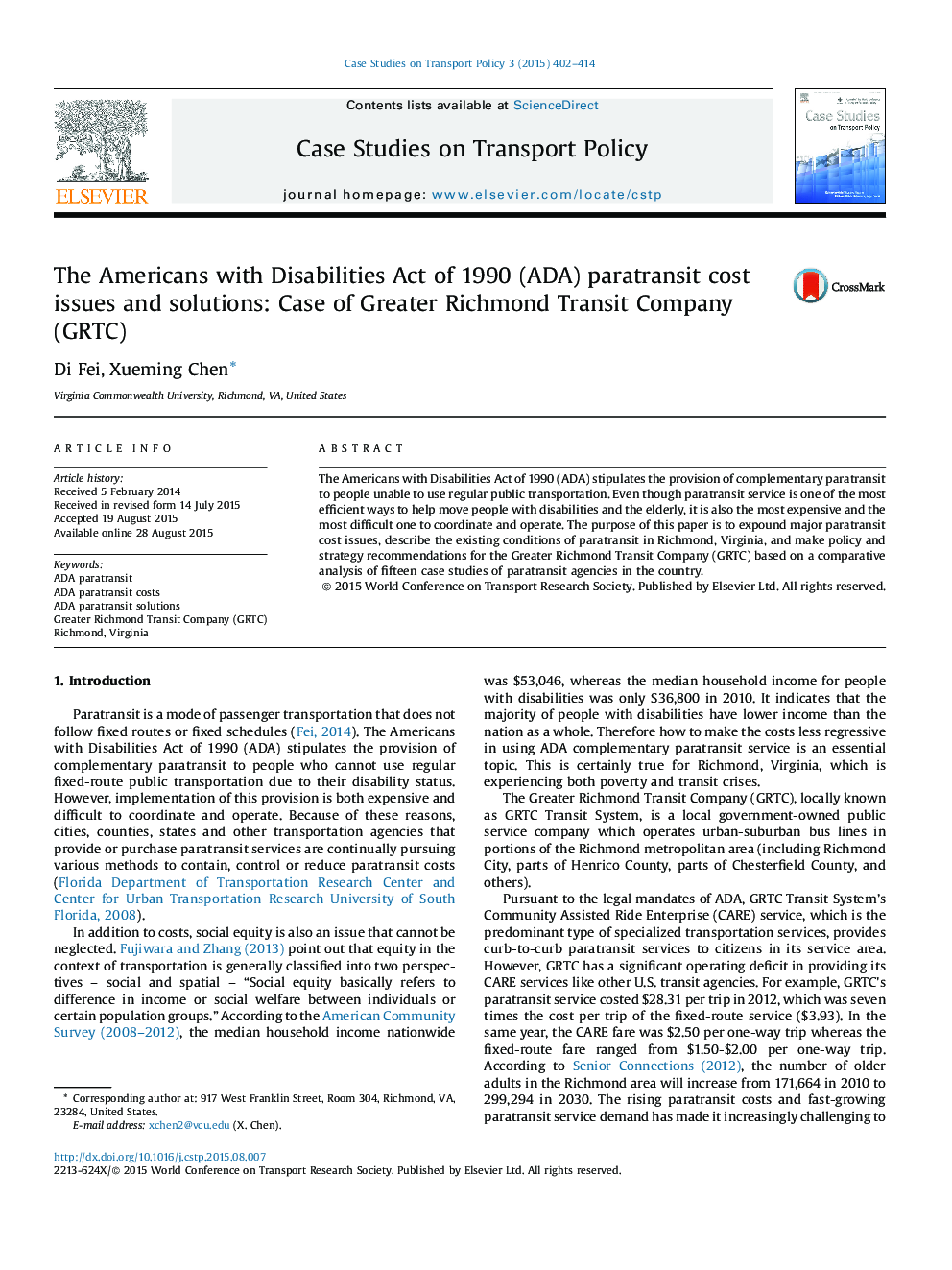| Article ID | Journal | Published Year | Pages | File Type |
|---|---|---|---|---|
| 250652 | Case Studies on Transport Policy | 2015 | 13 Pages |
•The Americans with Disabilities Act of 1990 (ADA) stipulates the provision of complementary paratransit to people who cannot use regular fixed-route public transportation due to their disability status. However, implementation of this provision is both expensive and difficult to coordinate and operate.•The Greater Richmond Transit Company (GRTC) has a significant operating deficit in providing its paratransit service, which is about seven times the cost per trip of the fixed‐route service.•It is possible to transfer the successful policies or strategies from other peer agencies to GRTC, including intramodal shift from paratransit to fixed-route transit, use of taxi.•The goal for the near future would be to reform GRTC’s fare structure for eligible ADA paratransit riders by imposing distance-based paratransit fare for the service area outside the 3/4 mile buffer zone of the fixed-route service as well as offering fixed-route service free of charge.
The Americans with Disabilities Act of 1990 (ADA) stipulates the provision of complementary paratransit to people unable to use regular public transportation. Even though paratransit service is one of the most efficient ways to help move people with disabilities and the elderly, it is also the most expensive and the most difficult one to coordinate and operate. The purpose of this paper is to expound major paratransit cost issues, describe the existing conditions of paratransit in Richmond, Virginia, and make policy and strategy recommendations for the Greater Richmond Transit Company (GRTC) based on a comparative analysis of fifteen case studies of paratransit agencies in the country.
